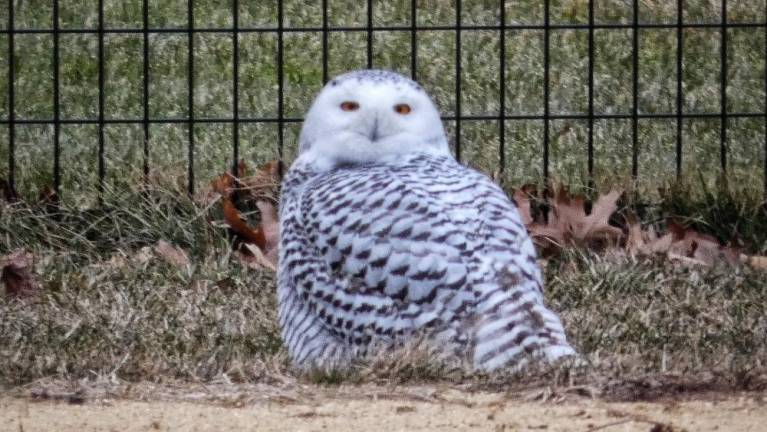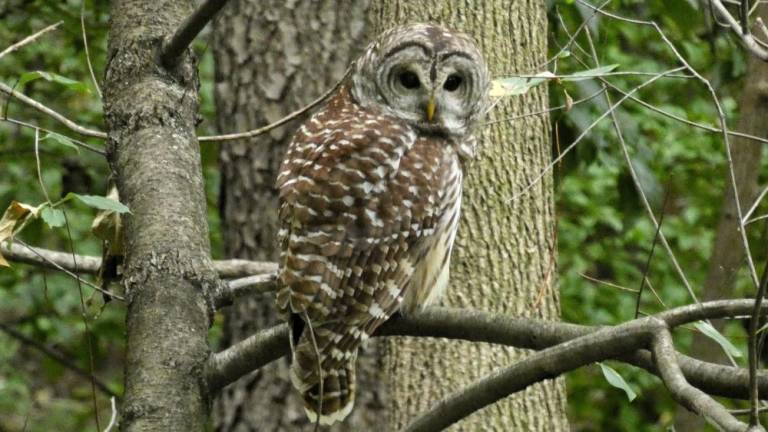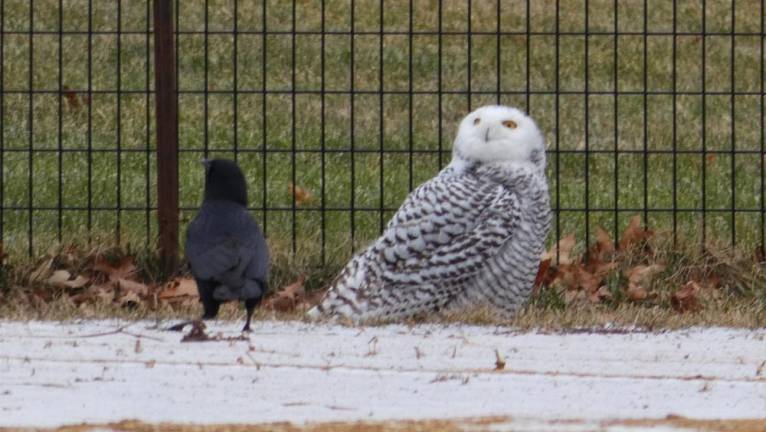Meet David Barrett of Manhattan Bird Alert
On birding in Manhattan, the famous snowy owl and raising environmental awareness




Most days, David Barrett spends a great deal of time looking for birds. When not birding, he’s reading about local sightings online and posting about birds on Twitter. Barrett’s account, Manhattan Bird Alert (@BirdCentralPark), has taken flight in recent months — with over 45,000 followers — as rare bird encounters have made headlines and enraptured New Yorkers.
Barrett, 57, retired from working as a hedge fund manager in 2009 and published a book in 2013 titled “A Big Manhattan Year: Tales of Competitive Birding” about his early birding experiences. He’s called the Upper East Side home for nearly three decades.
Recently, Barrett spent a morning in early February finding and photographing Barry the barred owl in Central Park before speaking with me on the phone. His sightings of the barred owl, which has stuck around the city since October, are upstaged only, perhaps, by the appearance of a snowy owl at the end of January, which has caused a stir.
When did you first start birding? And what was the allure?
I started birding in 2010, in November of 2010. At the time, I was a serious competitive runner. And one way you can get better, if you’re doing all the running you can do, is to do more walking.
I wanted to make the walks interesting, so I said, Well, I’ll look at things in the park. And initially, I thought of trees. But that didn’t prove to be too interesting. I thought, Well, let’s try birds.
I started devoting more time to my walks and adding birds. I kept track of what I’d seen. And starting out, I could add a new bird almost every day. It became something I enjoyed doing for itself, so it was not just as a way to make myself walk more.
Have you kept up with the running since the birding started?
Yes, well, I still do run. Often my running helps me get to a bird.
You wrote a book about competitive birding. Can you describe what a Big Year means?
A Big Year is when you try to observe as many species, bird species — wild bird species, to be precise — as you can in a given year, in a given geographic area.
You’ve done that a few years in a row?
I did end up doing it more or less in successive years and, you know, actually got better at it.
So 2014, I had 213 birds, so a few more than I had in 2012. Then I broke the record again in 2017 with 214 birds. I kept at it in 2018 and smashed the New York County record. I got 230 birds that year.
At this point, I have so many other responsibilities in running my alerts. So I’ve really much less time to be focused on birding.
I saw your alert about the snowy owl in Central Park. And I’m curious — were you the first to spot the snowy owl?
I definitely was not the first to see it in Central Park. Someone else, a somewhat anonymous birder, had issued an eBird report on it at 9 a.m. on January 27. That’s what clued me into it.
And first, I thought the report was a mistake. Because a snowy owl would be incredibly unexpected in Central Park.
What was it like when you finally saw the owl?
A beautiful and unexpected sight to see this large, white owl with black barring on the sand on the infield of the Central Park baseball field. It was amazing.
I was also a bit worried about it because on the way, I saw an enormous flock of American crows flying overhead. I knew I might have to look quickly, find the owl quickly, because the crows would want to drive it away. They’re enemies, crows and owls, and they did find it quickly, they did land, and they did try to harass it and make it move. But the owl showed courage, stood its ground.
I pulled out my camera right away, got photos and video of what was going on.
Once you posted those photos, how many people do you think that attracted to Central Park?
It created a great storm of interest, not just from people nearby, but certainly from people nearby. Birders showed up quickly once that alert got out.
It was also something of interest outside of Manhattan; it was a story.
I’ve read there’s been a bit of controversy, perhaps, about drawing that much human attention to birds. I’m wondering if you think the crowds ever disturb the birds?
The people did not disturb it at all — the crows did. And this is usually how it goes with owls. The crows and, to a lesser extent, hawks, which came by later, they were right in the face of this owl.
The people, as I, you know, warned that they should be — and I asked them to be — were well behaved. They stayed behind the fence at a distance of well over 200 feet. The crowd was quiet.
If people don’t know that owls come through Manhattan, they’re not going to care about them so much. When you know that there are owls among you in Central Park, it makes people think more about the choices they make and how they can help to preserve nature, how to conserve the environment.
On that note, do you think the birding community in the city has grown recently?
Oh, without question.
COVID, of course, you know, is a tragic thing. But it’s had positive effects on the birding community, in the sense of growing it, right, because more people have more time on their hands. So more time for birding.
And I’ve seen that in the contributions that my account gets. I got so many new birders giving reports, sharing their photos and videos. I still see more of them coming almost every week, a new birder or two.
Your account has a lot of followers!
I’m going to put out another tweet myself right now, because I’ve got a funny tweet from someone who’s running a barred owl account.
It’s supposedly a real estate announcement; the barred owl’s trying to rent out its tree. It’s pretty silly, but it’s also, I think, well done.
So let me do that right now ... let’s see how people react to that.
This conversation has been edited and condensed.